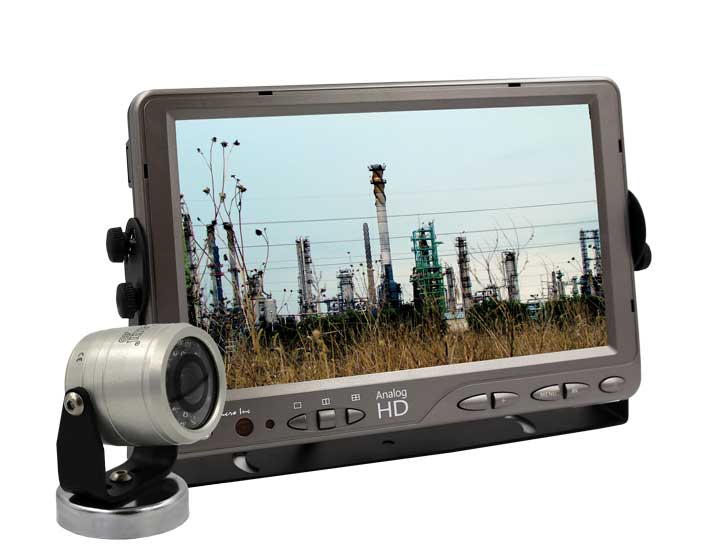
Photos: courtesy of Dakota Micro, Inc.
Jump in the driver’s seat of almost any newer piece of equipment today and there will likely be a camera of some kind.
However, among the types of cameras used on heavy equipment is a lot of variation in features, durability and cost. How does a construction manager know if they have the right camera? What should the camera be doing for an operator? There is a laundry list of things a construction manager, crane owner or operator might want out of a camera. Here are three essential camera features to look for when purchasing a camera system specifically for the piling industry.
1. Triple-hardened glass lens
Camera lenses are available in a variety of transparent materials. The common two are plastic and glass. While it may seem counterintuitive to install glass on heavy construction machinery, a triple-hardened glass lens is superior to plastic. Plastic lenses are less durable and like all plastics, easily scratched. Plastic lenses build up static electricity, becoming a dust magnet for dry particles, a no-go on dusty construction sites. Both scratches and dust reduce visibility, whereas glass lenses resist scratches and particle accumulation.
Additionally, some cameras offer autofocus, which means if particles are present on a camera lens, the camera will focus past those particles for an unobstructed view.
2. Anodized aluminum camera body
Many cameras are made of die-cast aluminum, plastic or stainless steel. Each of these has an Achilles’ heel. For example, die-cast aluminum is prone to casting defects and can be quite brittle in the cold. Also, it can easily break if put under pressure. Plastic is sometimes a good solution for some caustic environments, but heat, cold and sunlight can weaken the body over time. Plastics fade, become brittle and easily break. While stainless steel is durable and resists corrosion, it is expensive; and keep in mind, a major flaw of stainless steel is that rust is easily introduced when scratched. When rust penetrates the camera body, the camera will fail.
So, what’s recommended? Camera bodies carved from a solid billet (not cast) of anodized aluminum, which is an extremely durable material that will hold up to heat and cold as well as wet and caustic environments without corroding.
3. Wireless options
For a lot of heavy construction equipment, cables are just fine. For piling operators, not so much. As piling equipment travels longer distances than other equipment, and cables can get bunched upon retraction, it’s beneficial to look for a camera supplier that offers wireless capabilities.
However, if opting for the cable route, pick a provider that offers flexible silicone cables. The benefits? It remains flexible in hot and cold conditions. Many manufacturers use PVC-jacketed cables, but these become rigid in the cold and degrade in the heat. That can cause small breaks in the jacket, which allow water and particulates to penetrate and compromise cables.
Note, too, that some camera manufacturers offer adapter cables for third party monitors. This is a great solution to save space and money by plugging in to an existing monitor.
Other considerations


Durability is a huge consideration in camera selection in the crane industry. That’s why the ingress protection (IP) and impact protection (IK) ratings matter.
Construction managers should select a camera with the highest IP and IK ratings in industry. An IP69 camera is the best for heavy equipment being used outdoors because it’s completely dustproof and waterproof (plus it can be submerged indefinitely) and holds up to high pressure power washes without breaking. A camera with an IK10 rating (which is the highest rating) withstands the hardest impacts, protecting from breaks due to everyday use.
If a camera does break, it’s nice to work with a camera company that offers repairs. This is unique in the industry. Often cameras are considered consumable, simply replaced if broken. However, some manufacturers offer repairable components that could save lots of money over the life of a product.
Conclusion
Finding the right camera system is important to ensure the investment brings long-term benefits. Not all camera systems are created equal. Camera selection will vary based on the application needs. Working on a heavy-duty jobsite requires a heavy-duty camera. Focus on the three features above to select the best camera application to keep up with operations. ![]()
Mitch Stoeke is the OEM sales rep for Dakota Micro, Inc., a “Made in America” camera manufacturer specializing in highly rugged commercial camera systems in North Dakota. Stoeke can be reached at mitch.stoeke@dakotamicro.net.
